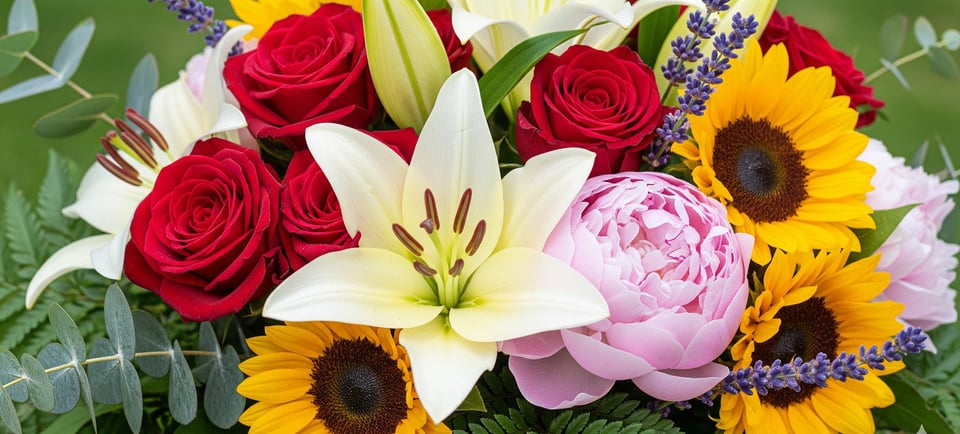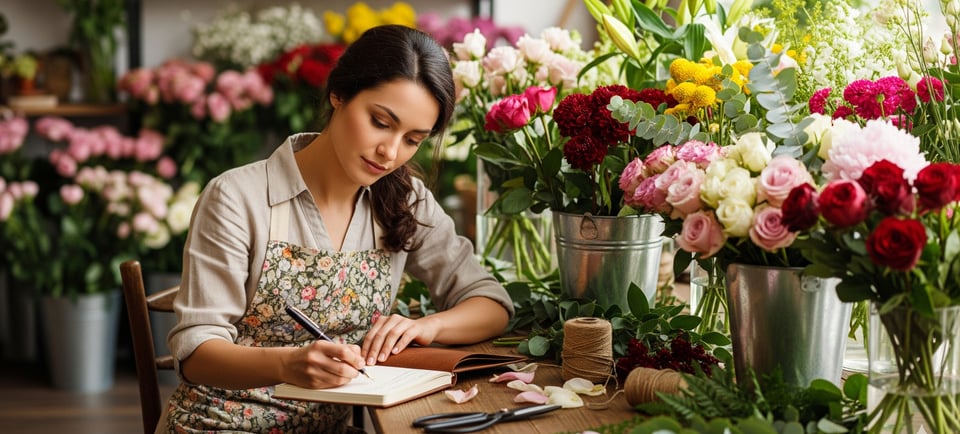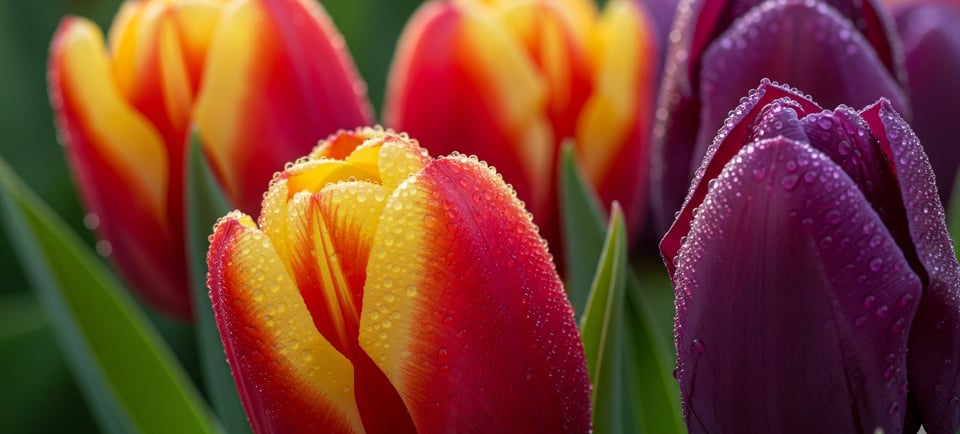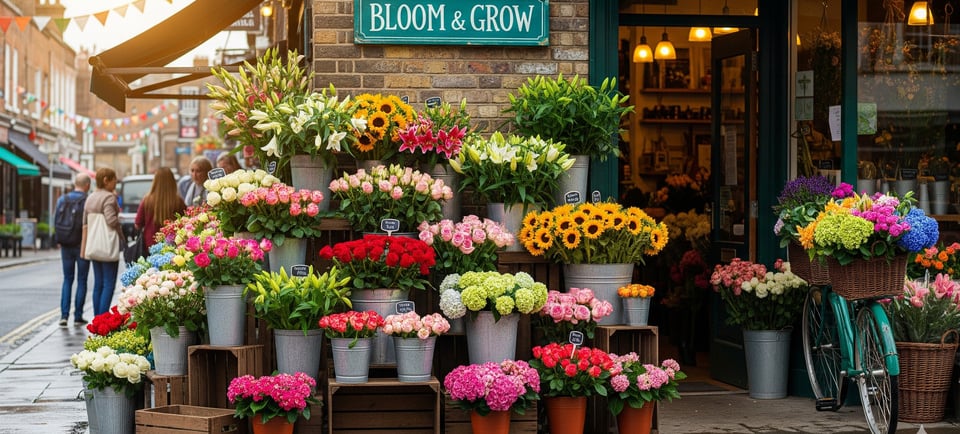Flower Meanings: Unearthing the Hidden Language in Every Bouquet
Floriography, the Victorian-era art of communicating with flowers, was a subtle and elegant way to express emotions. A carefully chosen bouquet could convey a secret message of love, friendship, or even rejection without a single word being spoken. This silent language transformed simple blooms into a powerful social tool, navigating the strict rules of the time.
9/7/20255 min read


Have you ever stopped to think about what a bouquet of flowers is really saying? Sure, we know a big, crimson rose says, "I love you," and we get that sunflowers radiate pure joy. But what about the quiet violet nestled in a mixed arrangement, or the unassuming snapdragon? Honestly, there’s a whole secret language hiding in those petals, a captivating code that's been whispering messages for centuries. You know, it's a bit like getting a text message from Mother Nature herself, only way prettier and with a much more fragrant vibe. This isn't just about picking a bunch of pretty blooms; it’s about sending a message.
This beautiful, almost poetic art of communicating through flowers is called floriography. It became a full-blown craze during the Victorian era. Back then, proper society had a lot of unspoken rules, and people couldn't always say what they truly felt. So, they let flowers do the talking. A simple nosegay or a carefully crafted tussie-mussie could deliver a message of love, warning, or even disdain, all without uttering a single word. It was a subtle, elegant way to express emotions that were otherwise off-limits.
It’s kind of wild to think about, isn't it? A suitor might send a lady a yellow rose, which back then meant friendship, not love, to subtly signal a desire to be just friends. Imagine the awkwardness if you got the translation wrong! The Victorians had entire dictionaries dedicated to decoding these floral secrets. This wasn't some silly fad; it was a bona fide social tool, a quiet way to navigate the complicated emotional landscape of the era.


What's the Real Scoop? Decoding Common Flowers
Let’s get down to brass tacks. What are some of the most popular flowers actually trying to tell us? It's not as simple as you might think because color, variety, and even how they're arranged can change the meaning.
The Regal Rose: We all know the red rose is the ultimate symbol of passionate love and romance. But what about its other siblings? A pink rose conveys admiration, gratitude, and joy, making it a perfect pick for a friend or mentor. Yellow roses, though, are a classic symbol of friendship and happiness. And a white rose? That's all about purity, reverence, and new beginnings, which is why they're so popular for weddings. A single rosebud is a message of youthful innocence and a heart yet to know love.
The Elegant Lily: With its sophisticated shape and dramatic flair, the lily has a complex reputation. In general, they symbolize purity, beauty, and refined elegance. But a white lily is a powerful emblem of innocence and sympathy, often used in funerals. A Stargazer lily with its bold, striking colors, represents ambition and prosperity. Did you know in ancient Greek mythology, the lily was said to have sprung from the milk of the goddess Hera? Now that’s a legacy!
The Timeless Tulip: As one of the first flowers of spring, the tulip symbolizes perfect love. Like a lot of flowers, the color is key. A red tulip is a declaration of true love, while a yellow tulip represents cheerful thoughts and sunshine. Purple tulips have a much more regal and royal vibe.
The Humble Daisy: This is a flower that just makes you smile. With its simple, cheerful face, the daisy is a pure symbol of innocence, loyal love, and new beginnings. It’s the kind of flower you'd give to someone to say, "I believe in you," or "Here's to a fresh start." The Gerbera daisy, with its vibrant array of colors, brings an extra dose of cheerfulness to the mix.


Flower Meanings FAQs
Q: Are flower meanings different in other parts of the world?
A: Absolutely! While some meanings, like the red rose for love, are pretty universal in Western culture, others can be totally different. For example, in many Asian cultures, the chrysanthemum symbolizes death and mourning, so you definitely wouldn't want to bring a bouquet of those to a birthday party! It's always a good idea to check the cultural context if you're sending flowers abroad. It’s all about being thoughtful and avoiding an accidental faux pas.
Q: What if I can't find a flower with the "right" meaning?
A: You know what? Don't stress it. The beauty of floriography is that it's just a guide. If you're giving flowers, the sentiment behind the gift is what truly matters. It's the thought, the time, and the care you put into it that will make the recipient feel special. So, if a bouquet of bright orange lilies just looks like the perfect match for your vibrant friend, go with it. They will appreciate the gesture no matter what.
Q: Do people still care about this "secret language" today?
A: Honestly, maybe not in the same rigid way the Victorians did, but the essence of it lives on. We still instinctively associate certain flowers with certain feelings. The red rose at Valentine's Day, the white lily at a funeral, or a cheerful bunch of sunflowers on a dark day. It’s ingrained in our culture. The language may be less of a secret code and more of a shared, emotional shorthand, but it's alive and well.


The Color Code of Emotion
Sometimes, it’s not the flower itself but the color that holds the most power. Think of it this way: a single red lily might not be as common as a rose, but that fiery red color still screams passion and desire. It’s like a universal color palette for our feelings.
Reds: The color of the heart. Red flowers, from roses to tulips to carnations, symbolize deep love, passion, and admiration. It's a bold, unmistakable message.
Pinks: This is a much softer, more gentle emotion. Pink flowers convey grace, joy, happiness, and a quiet sense of admiration. They're perfect for showing gratitude or friendship.
Yellows: Think sunshine and laughter. Yellow flowers are all about cheerfulness, joy, and the special bond of friendship. They're a surefire way to brighten someone's day and tell them you’re thinking of them.
Whites: Purity, innocence, and reverence are the hallmarks of white flowers. They can symbolize new beginnings, peace, or a heartfelt message of sympathy.
Oranges: These bold, sunny blooms are a symbol of excitement, enthusiasm, and fascination. They're the go-to choice when you want to send a burst of positive energy.
Purples: Often associated with royalty and dignity, purple flowers can also represent success, admiration, and tradition. They have a more refined, sophisticated feel.
Blues: Rare and serene, blue flowers are the embodiment of tranquility, peace, and calmness. They can soothe the soul and help release negative feelings.


Flower Meanings Takeaway
So, the next time you find yourself at a florist, or wandering through a garden, take a moment. Look at the colors, the shapes, the delicate arrangements. Each bloom has a story to tell, a feeling to convey. And when you pick a bouquet for a loved one, you're not just giving them a beautiful gift; you're creating a moment, a memory, and a secret message just for them. It's a spontaneous act of love and connection, and honestly, what could be more human than that?
Explore
Discover unique Czech gifts for every occasion.
Craftsmanship
Tradition
Mon-Fri 9:00-4:00
Address: Školská 660/3, 110 00 Nové Město, Prague, Czechia
Phone: +420 722 126 126
© 2024. All rights reserved.
